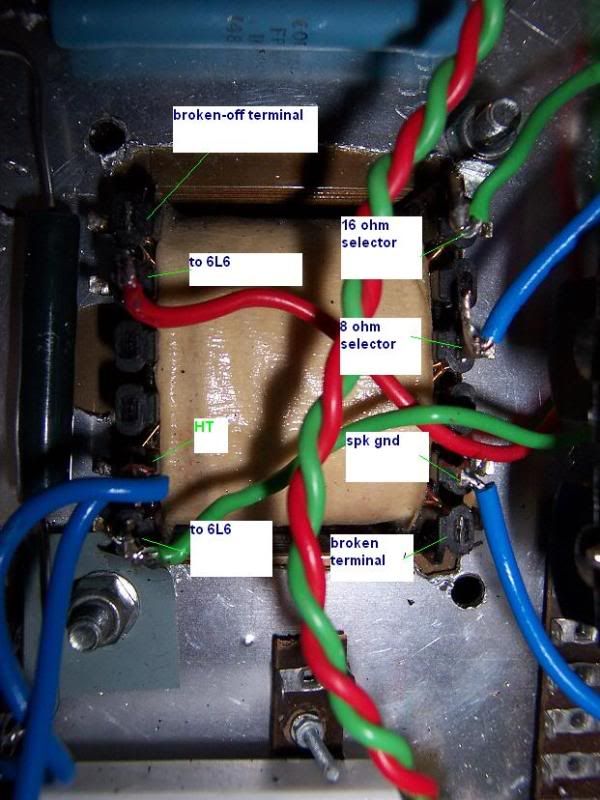Hello,
I'm building an amp with a 5d8 power section and PI.
At the moment, the amp goes triode gain stage -> gain control -> cold biased triode gain stage -> dc cathode follower (using two sides of a 12AX7; so fed by another triode gain stage) -> tone stack -> volume control -> triode-gain into paraphase -> 2x6L6 cathode biased
I'm only getting 8W output. It should be about 25W.
The PI is driving the 6L6s with about 60V peak to peak. Is this the cause of the low output? Should it be driving the tubes harder?
Cathode voltage on power tubes is 24V. Plates are 363V.
IIRC, PI has 340V through a 100K, resulting in about 160V on the plate.
Any help would be much appreciated!
Thanks,
Harry
(also, preamp sounds great - thanks to Merlin's book, which is absolutely fantastic. I am sure this is going to be the best amp I have played when I'm finished)
I'm building an amp with a 5d8 power section and PI.
At the moment, the amp goes triode gain stage -> gain control -> cold biased triode gain stage -> dc cathode follower (using two sides of a 12AX7; so fed by another triode gain stage) -> tone stack -> volume control -> triode-gain into paraphase -> 2x6L6 cathode biased
I'm only getting 8W output. It should be about 25W.
The PI is driving the 6L6s with about 60V peak to peak. Is this the cause of the low output? Should it be driving the tubes harder?
Cathode voltage on power tubes is 24V. Plates are 363V.
IIRC, PI has 340V through a 100K, resulting in about 160V on the plate.
Any help would be much appreciated!
Thanks,
Harry
(also, preamp sounds great - thanks to Merlin's book, which is absolutely fantastic. I am sure this is going to be the best amp I have played when I'm finished)


Comment